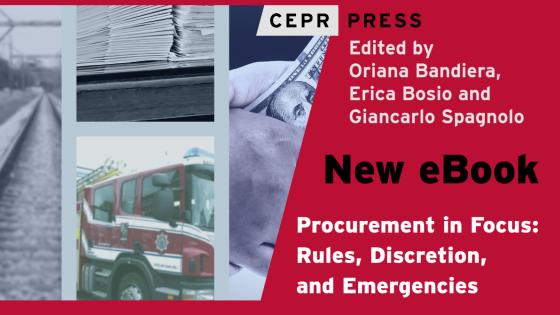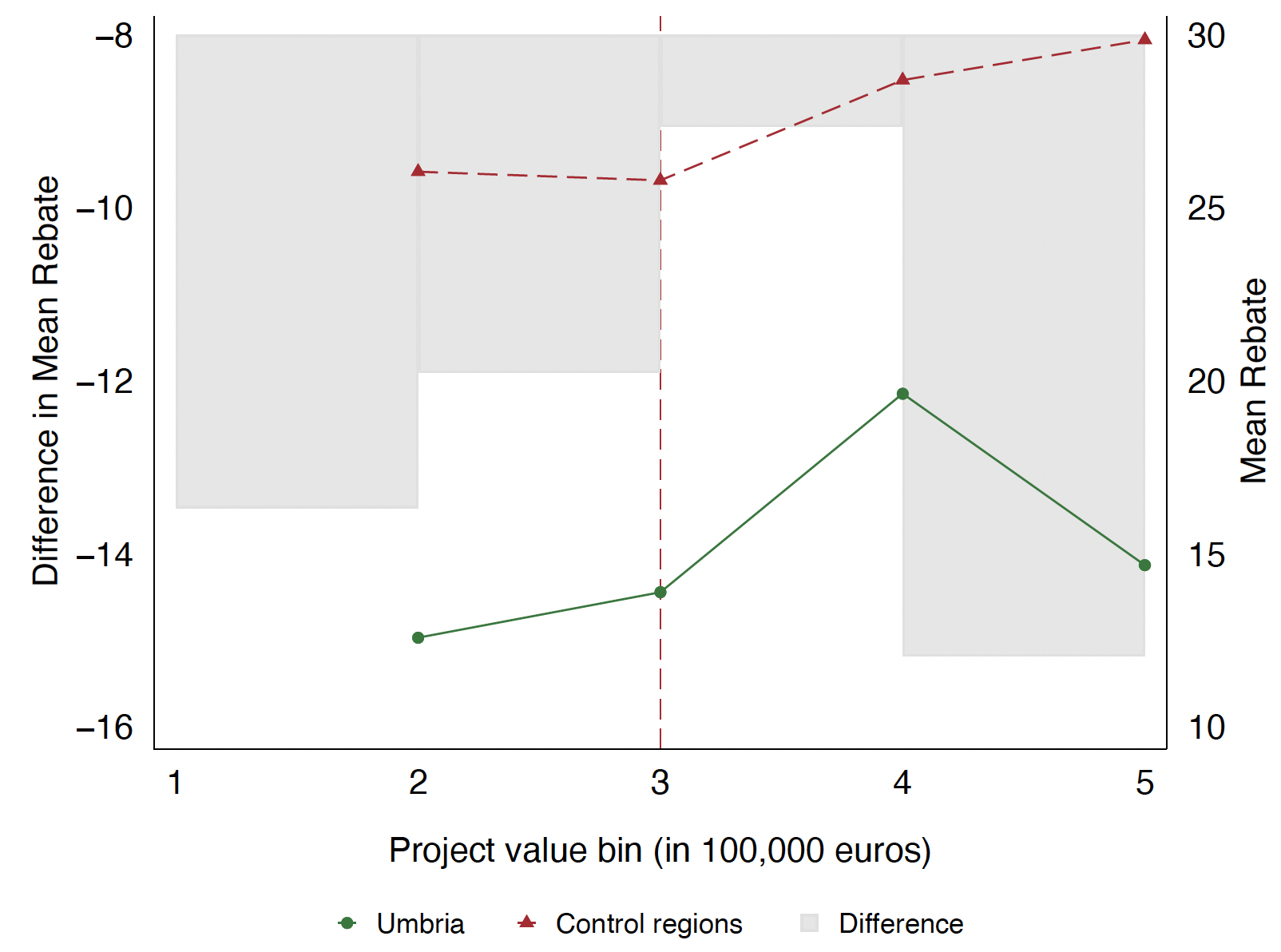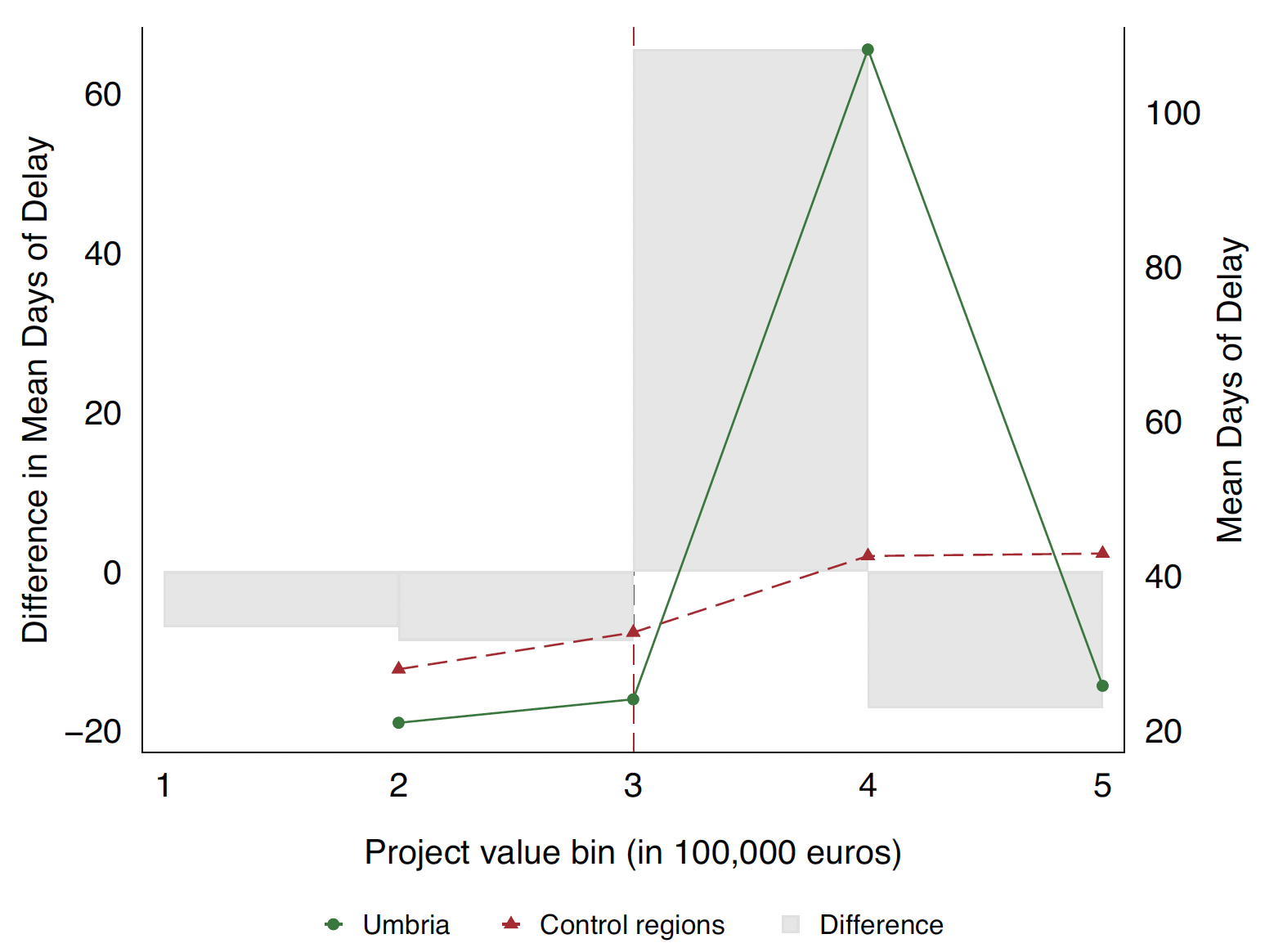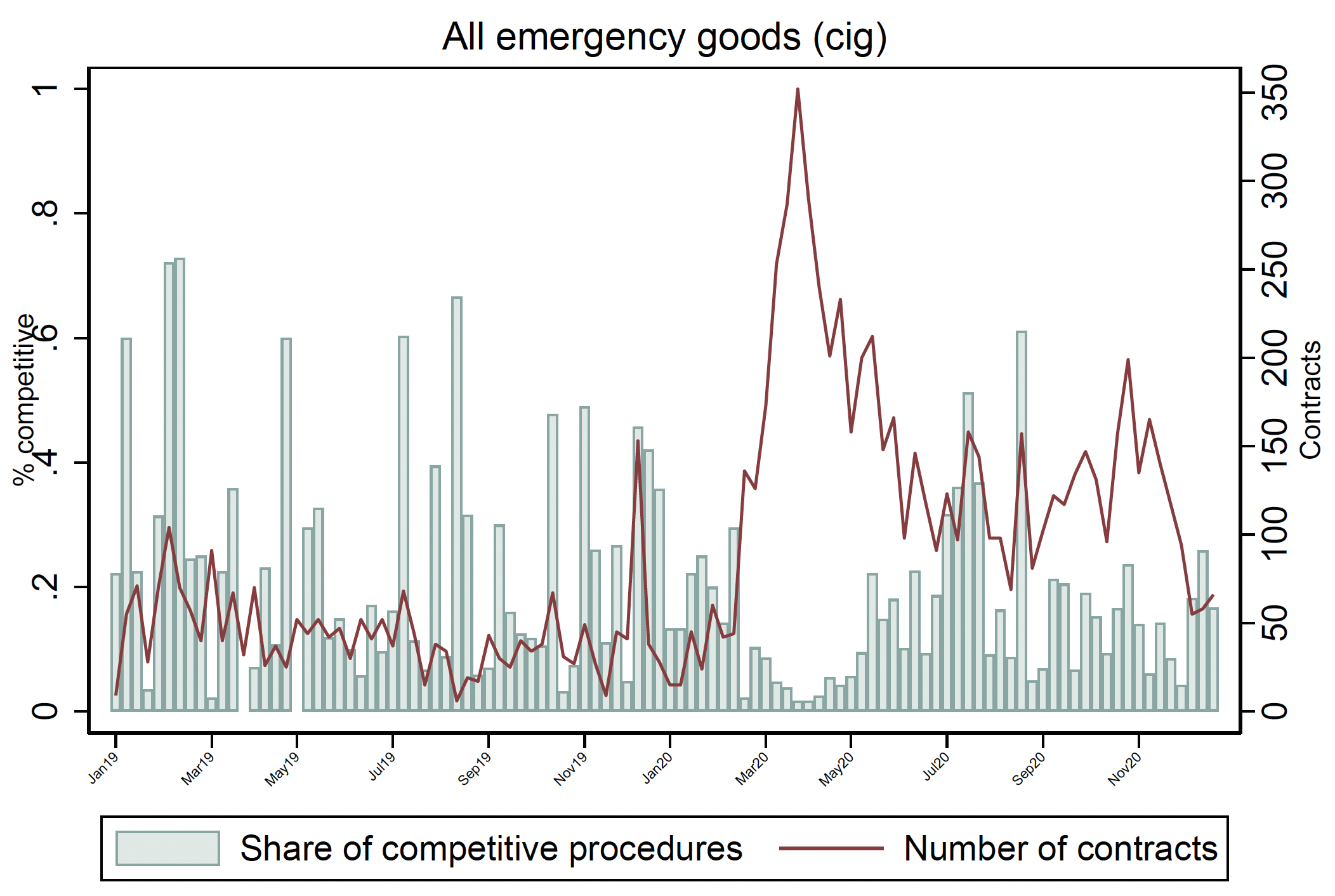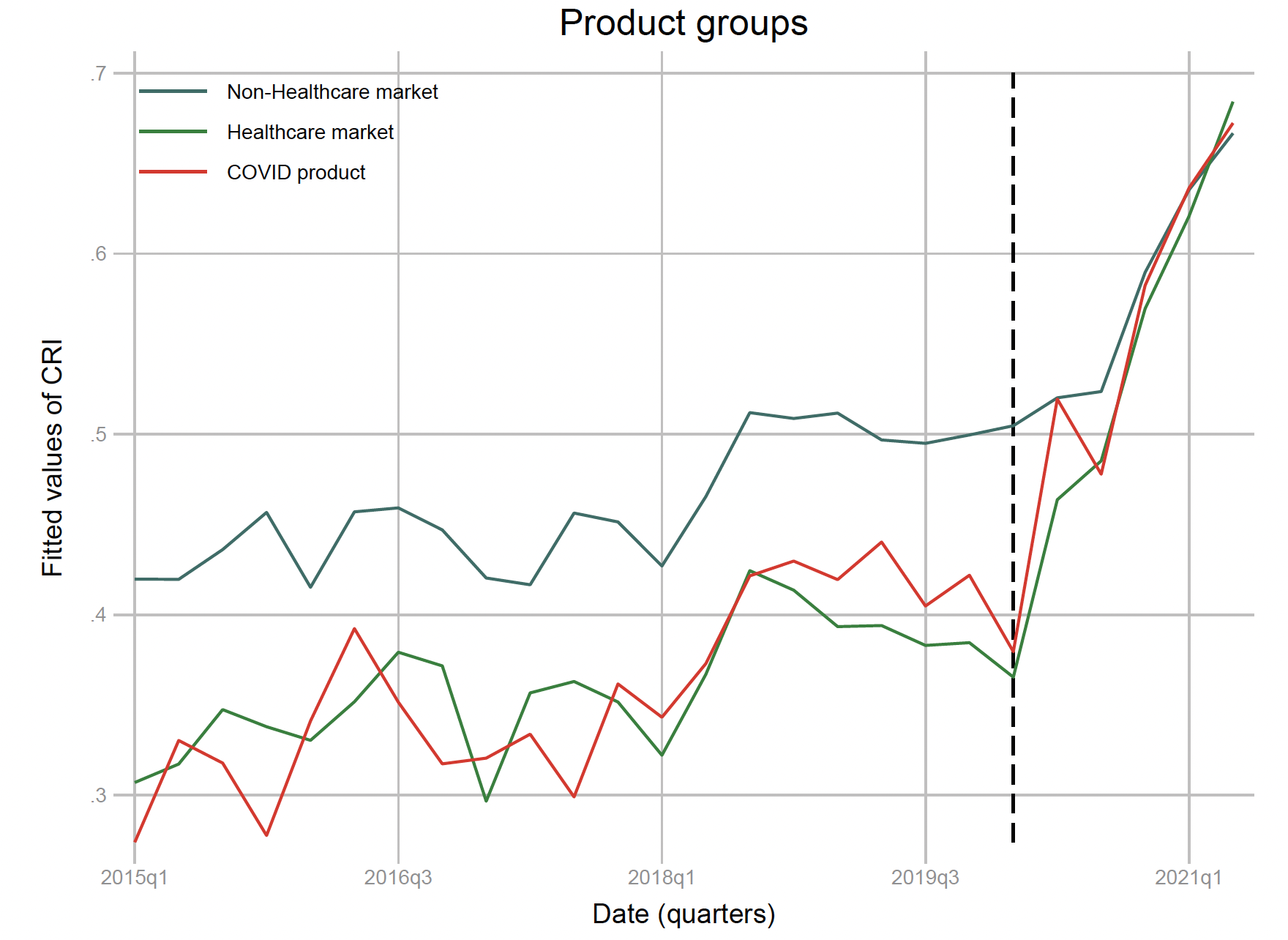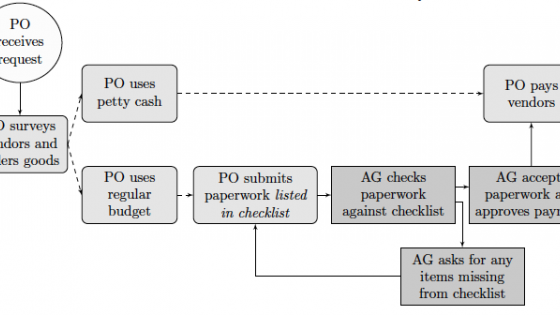The procurement of public goods and services is a textbook example of moral hazard – an agent buys goods that he does not use with money he does not own. The agent’s goal is typically set to achieve ‘value for money’ for the taxpayer, but value for money is hard to measure and often not entirely under the control of the agent (Manelli and Vincent 1996, Hart et al. 1997). In the textbook set up of the principal–agent model, there are just two actors. Reality is somewhat more complex, as the person in charge of enforcing rules is not the principal (i.e. the taxpayer) but rather another agent on a higher rung of the hierarchy who faces moral hazard problems of her own.
A new CEPR eBook (Bandiera et al. 2021) brings together recent research on several aspects of the agency problems and the solutions that have been tried in a range of countries, with varying degrees of success. The core theme that runs through the book is the fundamental tension between rules and discretion. Rules limit agents’ ability to pursue their private interests at the expense of the taxpayers, but discretion allows them to use their knowledge of the context and react quickly to unforeseen changes.
Download Procurement in Focus: Rules, Discretion, and Emergencies here
Several questions are explored in the eBook. What are the trade-offs between rules and discretion in public procurement? Do these trade-offs change during shocks and emergencies? Are there other institutions that play a complementary role in improving procurement outcomes? In this column, we provide a brief overview of the key new findings in the book.
The benefits and risks of discretion
To strike a balance between rules and discretion, we need to know more about the exact nature of the agency problem. A common assumption is that agents (and their monitors) are corrupt – that is, they actively exploit their position to extract rents. A less common assumption is that they have a strong preference for leisure and therefore put little effort into achieving their contractual objective of getting value for money. This distinction between corrupt and lazy agents is important because policies designed to curtail corruption, such as strict rules that require extensive documentation, can backfire if the agent is lazy (or even just cautious), as deviating from the rules is punishable even when doing so would benefit the taxpayer.
The trade-off between rules and discretion has been central to research on procurement. Kelman (1990) stressed the costs of overly rigid regulations in US government procurement and made the case for increased discretion. Recently, research on the potential benefits of discretion has progressed rapidly (Duflo et al. 2018, Coviello et al. 2018, Bandiera et al. 2020, Decarolis et al. 2020, Bosio et al. 2021). However, the risk of its abuse remains high, particularly during emergencies and with weak institutions.
The risks and benefits of discretion are discussed in several chapters in this volume. For example, the case of increased discretion in the years following the 1997 earthquakes in Umbria and Marche, Italy is presented to document that the public road authority actively sought discretion in its public procurement strategy by manipulating project values to stay below a regulatory threshold. This ‘bunching’ below the threshold allowed the use of simpler, faster, and more discretional procedures. The authors find that in the sample of manipulated contracts, works are more expensive, but are also delivered faster (Figure 1). The volume presents other examples on the risks and benefits of discretion, including through the results of a global study conducted by the World Bank and case studies on Colombia, the Czech Republic, Lebanon, Romania, and the Russian Federation.
Figure 1 Time and cost for treated/Umbria versus control regions around the discretion threshold
One contribution in the volume highlights that discretion can also play an important role in the life of the contract, and specifically with renegotiations. Using data from contracts in the French car park sector, the authors show that renegotiations lead to more renewals, which are regarded as a proxy for successful performance. However, the positive effects are only visible for complex concession-type contracts, and not for more rigid shorter-term service-type contracts.
Are incentives different during emergencies?
The balance between rules and discretion is usually shifted towards discretion in times of crisis and emergency, when public procurement rules are often made more flexible to support governments’ efforts to increase spending, save lives, and reduce the damage. This flexibility takes the form of a relaxation of rules on transparency, competition, and oversight. It may include more flexible pricing strategies, more frequent renegotiations, accelerated timelines, and increased use of negotiated contracts and direct contracting (Figure 2). This was the case during the recent COVID-19 pandemic, as well as in earlier crises and natural disasters discussed in the volume.
Figure 2 Number and types of procurement events
While emergencies justify a departure from standard procurement rules, implementation failures and rent-seeking opportunities remain substantial (Figure 3). Emergency procurement has historically been linked to corruption, collusion, and abuse. Examples of such corruption and abuse include the allocation of contracts at inflated prices to the firms of family, friends and those who offer bribes, reduced quality, and increased allocation of contracts to politically connected firms.
Figure 3 Corruption increases during the COVID-19 emergency period
In the context of emergencies and crises, research in this volume repeatedly shows that at least two steps can be taken to improve procurement outcomes and mitigate the risk of corruption, collusion, abuse, and incompetence during crises.
The first is better preparation for emergencies ex ante. Preparedness for emergency situations entails defining crisis-ready contracting procedures and outlining fundamental principles of crisis response. This should include developing public authorities’ competence and expertise, increasing the capacity of the procurement workforce, and establishing reliable institutional structures to favour public contract adaptability to unanticipated shocks. Certain institutional arrangements – such as specialised emergency catalogues or framework agreements – can help. While procurement rules should be the main focus of this effort, research in this volume shows that other aspects of regulation – for example, rules on financial asset disclosures – play an important role as well.
The second step is increased monitoring to ensure that the increase in discretion coming during emergencies is not abused. Monitoring, however, is best reoriented towards outputs and results rather than procedural correctness. Audits and citizen oversight should be strengthened, including through the use of open data. Special attention should also be paid to the design of auditing mechanisms.
Complementary institutions
Several chapters in this volume argue that the quality of surrounding institutions is crucial in determining whether discretion ends up being beneficial. One contribution in the volume, for example, uses data on public procurement and disclosures of income and asset declarations of politicians in 175 countries to show that these two sets of regulations are complementary in achieving better procurement outcomes and ensuring the proper behaviour of politicians and government officials (Figure 4).
Figure 4 Public procurement and public disclosure practices are highly correlated
Note: “Practice” is the sum of four subindices – each scored between 0 and 1 – measuring the practice of public procurement in four areas: transparency, competition, exclusion and contract integrity. “Disclosure values” is the simple average of value scores the following areas: (I) assets, (II) liabilities, (III) income, (IV) expenditure, (V) travel, and (VI) gifts. Similarly, “Disclosure sources” is the simple average of the six areas with source scores: (I) assets, (II) liabilities, (III) income, (V) travel, (VI) gifts, and (VII) other conflicts of interest.
Source: Authors’ calculations based on data from Bosio et al. (2021) and the authors’ update of the dataset in Shleifer et al. (2010).
Another chapter highlights the importance of competence and professionalisation of bureaucrats by quantifying them through a survey of US federal workforce. The authors find that an increase in the buyer institution’s competence of one standard deviation reduces the number of days of delay by 23%, cost overruns by 29%, and renegotiations by half. Managerial competencies are more important for complex procurement procedures.
Conclusion
In recent years, the field of public economics has focused on comparison across countries with different government capacity. The theme of this research is that institutions exert a profound influence on economic and social development. The chapters in this volume contribute to this burgeoning literature by arguing that, to understand institutions, one needs to understand the basic trade-off between the costs of discretion and those of rules. An extreme application in research is the study of this trade-off during emergency situations like the COVID-19 pandemic.
The logic that permeates the chapters in this volume can be applied to study the structure of efficient institutions and the politics of institutional choice. We do not sufficiently delve into these two broader areas, as new data need to emerge from the latest healthcare and fiscal crisis to be able to properly measure the effect of different institutional arrangements.
References
Bandiera, O, M C Best, A Q Khan, and A Prat (2020), “The Allocation of Authority in Organizations: A Field Experiment with Bureaucrats”, London School of Economics, mimeo.
Bandiera, O, E Bosio and G Spagnolo (2021), Procurement in Focus: Rules, Discretion, and Emergencies, CEPR Press.
Bosio, E, S Djankov, E Glaeser, and A Shleifer (2021), “Public Procurement in Law and Practice”, Mimeo.
Coviello, D, A Guglielmo, and G Spagnolo (2018), “The Effect of Discretion on Procurement Performance”, Management Science 64(2): 715–38.
Decarolis, F, R J Fisman, P Pinotti and S Vannutelli (2020), “Rules, Discretion, and Corruption in Procurement: Evidence from Italian Government Contracting”, CEPR Discussion Paper No. 14794.
Duflo, E, M Greenstone, R Pande and N Ryan (2018), “The Value of Regulatory Discretion: Estimates from Environmental Inspections in India”, Econometrica 86(6): 2123-2160.
Manelli, A and D R Vincent (1995), “Optimal Procurement Mechanisms”, Econometrica 63(3): 591-620.
Kelman, S (1990), Procurement and Public Management: The Fear of Discretion and the Quality of Government Performance, AEI Press.
Shleifer, A, S Djankov, R LaPorta, and F Lopez-de-Silanes (2010), “Disclosure by Politicians”, American Economic Journal: Applied Economics 2(2): 179-209.
